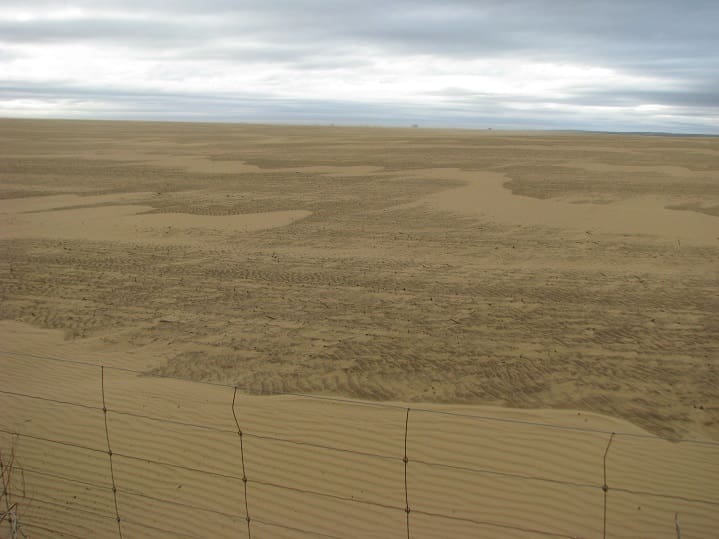
Wind erosion in a paddock in WA’s northern agricultural region.
WIDESPREAD dust storms across Western Australia’s northern agricultural region in recent weeks has provided a graphic reminder of the need to protect paddocks and people’s lives from the impact of wind erosion.
WA Soil and Land Conservation commissioner Cec McConnell said the top soil losses not only eroded landholders’ productivity and profitability but also posed a risk to public safety.
“While the Mid West and northern Grainbelt has experienced some unusual weather events recently, strong wind events at this time of the year are not unusual,” she said.
“This year has been particularly bad, with dust storms posing a hazard to those on the roads, reducing visibility to almost nothing, as well as posing a risk to people with asthma and other respiratory conditions.
“These wind events are not going to go away so it is important for landholders in this region – and across the Grainbelt – to adopt strategies that mitigate the risk of wind erosion threatening future sustainability and people’s health and safety.”
Groundcover key to minimising erosion
The WA Department of Primary Industries and Regional Development (DPIRD) recommends maintaining at least 50 per cent ground cover to minimise the impact of wind and water erosion.
A department assessment of ground cover of the northern agricultural region found a third of the region had less than the recommended 50 per cent at the end of summer, leaving large areas vulnerable to strong autumn winds.
Ms McConnell encouraged landholders to integrate land management strategies that maintain soil cover into their whole farm planning programs to protect topsoil from being blown away.
“Now is the time to start planning strategies and investments to maintain ground cover over summer and into autumn, including harvesting measures to optimise crop residues and stubble management,” she said.
“There are short and long term strategies that landholders can implement to maintain and increase ground cover and reduce erosion, like maintaining and sowing into stubbles and undertaking soil amelioration activities after it rains and the soil profile is wet.
“We all want to build sustainable farming systems for future generations and maintaining topsoil and soil health is crucial to attaining long term productivity and profitability.”
Ms McConnell said the risk of erosion was ever present and encouraged landholders to consider the influence of wind speeds in their day-to-day activities.
“Just like wind speeds influence spray conditions, landholders must consider whether the wind speed is conducive to erosion, especially when cultivating or undertaking soil amelioration activities and whether it is practicable to proceed,” she said.
“These actions and others will help to ensure wind events like those seen in recent weeks and years do not continue to result in soil erosion or pose a risk to future sustainability.”
Source: DPIRD
For more information and advice visit agric.wa.gov.au and search for ‘Managing wind erosion in southern Western Australia’.



HAVE YOUR SAY